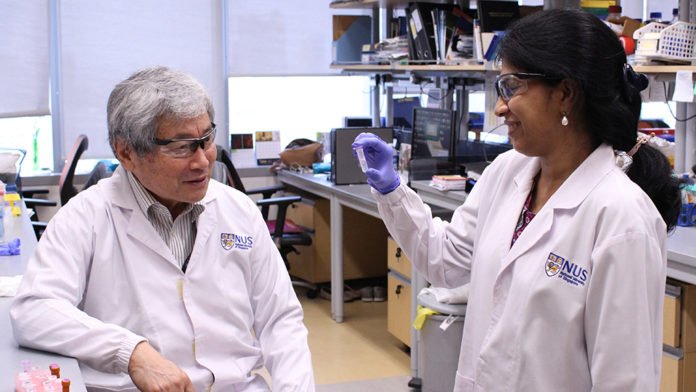Humans are constantly exposed to mutagenic DNA damaging lesions called DNA interstrand crosslinks (ICLs) which can be induced by environmental sources such as formaldehyde, and chemotherapeutics such as cisplatin. Left unrepaired, ICLs could drastically increase predisposition to cancer.
In a new study by the National University of Singapore, scientists suggest that the Fanconi Anemia (FA) pathway is a genome maintenance network that guides the repair of DNA ICLs. They also revealed that RUNX proteins are integral to efficient DNA repair via the Fanconi Anemia (FA) pathway.
Scientists observed a thorough molecular characterization of RUNX proteins in the FA pathway. They found that the proteins had a substantial physical association with DNA repair complexes and co-regulated the recruitment of DNA repair protein FANCD2 to sites of DNA damage.
Prof Ito, who is a widely recognized scientist for his research on the RUNX genes said, “Humans are constantly exposed to mutagenic DNA damaging lesions called DNA interstrand crosslinks (ICLs) which can be induced by environmental sources such as formaldehyde, and chemotherapeutics such as cisplatin. Left unrepaired, ICLs could drastically increase predisposition to cancer.”
“RUNX1 is aberrant in several hematopoietic cancers while RUNX3 expression is turned off in many solid cancers. How and under what contexts RUNX proteins exert their role in tumor suppression is still very much an unanswered question.”
To determine if RUNX proteins bind to DNA during repair, the researchers tested RUNX binding to DNA repair intermediates. Observations showed the RUNX proteins preferentially bound to structures that mimicked replication fork or DNA repair intermediates such as single-strand DNA and splayed arm DNA.
Along with this, scientists observed the protein-protein interaction between RUNX proteins and BLM during the process of DNA repair. RUNX3 and BLM interacted at a low level, however the interaction increased upon exposure to MMC, indicating that the formation of the RUNX3 and BLM complex is dependent on DNA damage.
Enrollment of DNA repair protein FANCD2 after the consumption of RUNX and BLM supposedly was essentially impeded after the presentation to MMC. Conversely, control cells with ordinary levels of RUNX and BLM showed vigorous enlistment of FANCD2.
Prof Ito said, “The study adds an extra layer of complexity of FA pathway regulation, and could make it more possible to develop synthetic-lethal approaches to attack RUNX-deficient cancers.”
“By showing how RUNX inactivation weakens DNA repair, the study has unveiled newer opportunities to target RUNX-deficient epithelial cancers at the early stages of carcinogenesis.”
The results of this study were published in Cell Reports on 14 August 2018.
